Published 9 August 2022 ● Last Updated on 9 August 2022
We are using more plastic than ever before. I vividly remember as a child we used to carry bags for our weekly vegetable and fruit shopping from the market. Most often these bags were worn out bed sheets that Amma (my mother) would stitch up as bags, some were handmade with a kind of wire. We never left the house without these. Shopkeepers packed what we bought in newspapers or brown paper covers. Oil was purchased in cans that we carried to the shop, toothpaste came in metallic tubes and kitchen containers were either glass or steel.
Fast forward to now, that way of life has disappeared. We are surrounded by plastic, from textiles to electronics to furniture. Plastic production has soared from 2 million tonnes in 1950 to 348 million tonnes in 2017, becoming a global industry valued at US$522.6 billion, and it is expected to double in capacity by 2040. Packaging makes up the bulk of it.
And where does all this plastic go? With poor recycling and waste management, an estimated 11 million tons of plastic waste enter the ocean every year. Degrading over time – as microplastics and microfibres, it is now showing up in the human body, and even our blood!
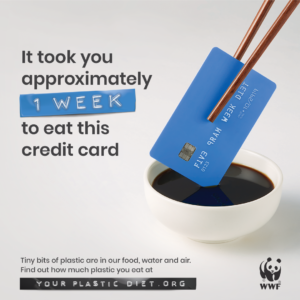
A 2019 study commissioned by WWF and carried out by University of Newcastle, Australia surmised we’re consuming about 2000 tiny pieces of plastic every week! That’s approximately 21 grams a month, just over 250 grams a year. A 2020 study uncovered microplastic particles in the placentas of unborn babies for the first time. Another 2022 study detected microplastic pollution in human blood for the first time, with scientists finding the tiny particles in almost 80% of the people tested.
Science isn’t settled on what exact health risks these entail; research is still in its early stages and looking to measure exposure – but we aren’t holding our breath for good news. Meantime, what we do know is that when plastics degrade into microplastics – between 1 micrometre to 5 millimetres in size – they piggyback on our water, breath and food into us.
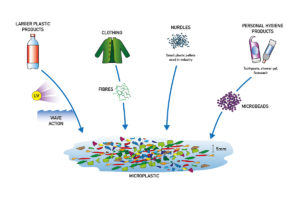
Here’s a primer on how plastic is infiltrating our bodies, and why we should care.
Plastic in our water
The largest source of plastic ingestion is from drinking water. Plastic has been found in groundwater, surface water, tap water and bottled water all over the world. In a study on bottled water, all samples were found to contain. As for tap water, the study suggests large regional variations, with twice as much fibre per 500ml observed in American or Indian water as in European or Indonesian tap water. Shellfish that are eaten whole, including their digestive system account for as much as 0.5 grams of -plastic ingested per week.
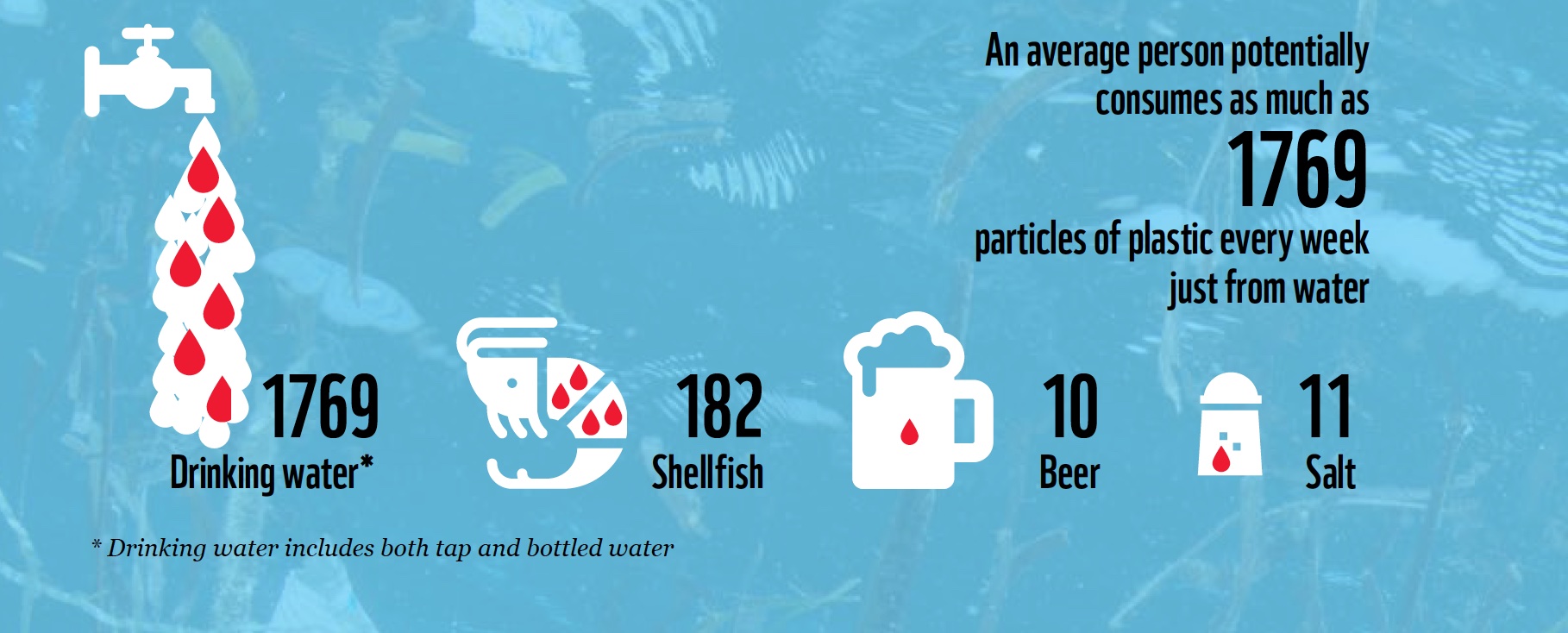
Plastic in the air
Do you know our sofas, carpets, curtains, even clothes made of synthetic textiles release microfibres into the air? This has respiratory as well as cardiovascular impact. Further on, when plastics and microplastics end up in the environment, they attract micro-organisms, such as harmful bacteria and pathogens – which may increase the risk of infection.
Incineration of plastic waste in open fields is a major source of air pollution. About 12% of most municipal solid waste is made up of plastic of one kind or another, and 40% of the world’s garbage is burned, according to this study.
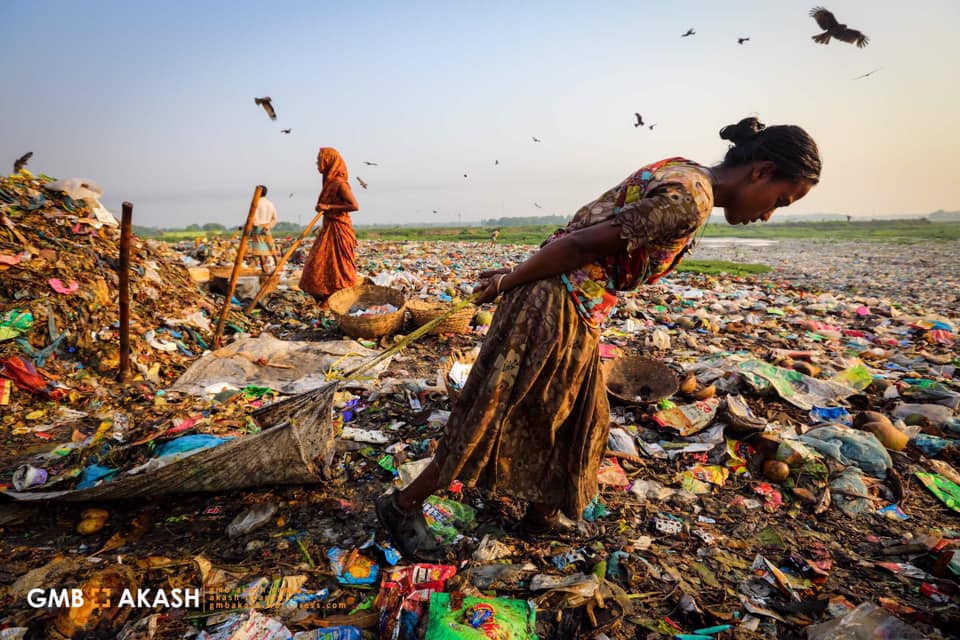
Dioxins are potentially lethal persistent organic pollutants, they settle on crops and in our waterways. From there they eventually enter our food and our bodies. Dioxins can cause cancer and disrupt thyroid and respiratory systems.
Phthalates, the chemicals that give plastic flexibility and softness are endocrine disruptors, associated with a plethora of health problems, from fertility issues and neonatal impacts on babies to allergies and asthma. Burning of plastic waste also increases the risk of heart disease, aggravates respiratory ailments such as asthma and emphysema and causes rashes, nausea, or headaches, and damages the nervous system.
Plastic in our food
With plastics in the air and water, it is inevitable that some of these make way up to us – via the soil, as well as via food chains. Ingesting plastic is dangerous for humans because its toxicity comes from lead, cadmium, and mercury and these toxins have also been found in many fish in the ocean. Humans continue consuming contaminated seafood that could be dangerous. The di-ethyl-hexyl-phthalate (DEHP) contained in some plastics, is a toxic carcinogen. Other toxins in plastics are directly linked to cancers, birth defects, immune system problems, and childhood developmental issues. Another chemical found largely in water bottles and food containers – BPA (Bisphenol A) is known to interfere with the human hormonal function.
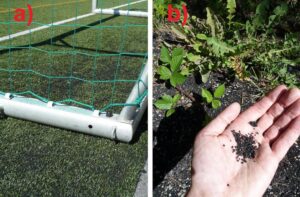
Microplastics pollution has also been shown to alter soil conditions, which can impact the health of fauna and increase the likelihood of harmful chemicals leaching into the soil. In 2020, the first-ever field study to explore how the presence of microplastics can affect soil fauna was published in the Proceedings of the Royal Society. The paper notes that terrestrial microplastic pollution has led to the decrease of species that live below the surface, such as mites, larvae and other tiny creatures that maintain the fertility of the land.
The chemical additives in plastic are known to disrupt the hormone system, cause inflammation, traverse cellular barriers, and even cross highly selective membranes such as the blood-brain barrier or the placenta. Within the cell, they can trigger changes in gene expression and biochemical reactions, among other things.
The table below gives us a clear picture of how everyday plastics affect us
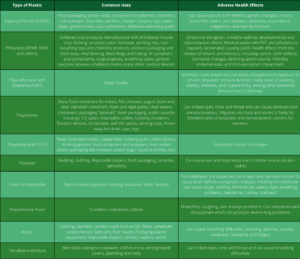
Plastic pollution is a global problem that arises from multiple sources and crosses national boundaries. It is the consequence of reckless, shortsighted, and unsustainable exploitation of the earth’s resources. It is a threat to life on earth, including human health. However, this problem can be nipped off if each one of us becomes conscious of our consumption and buying patterns.
What do you think we can do to reduce plastic pollution?
Related Links
Buying without packaging? These shops make zero waste possible in Singapore
Best out of waste| Plastic-busting initiatives keeping our oceans clean


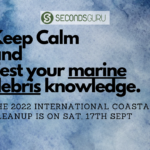
0 Comments